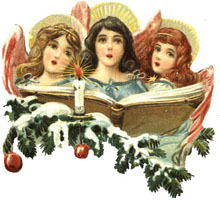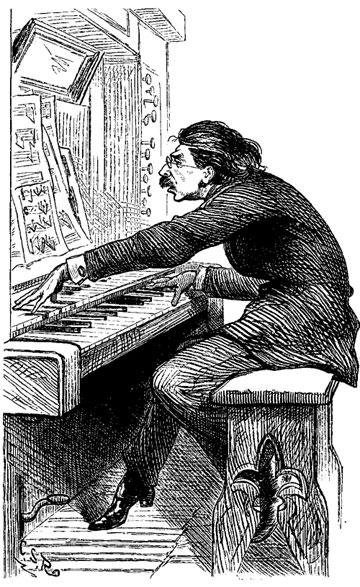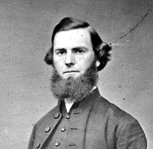Have you ever thought about how many parades are associated with season of Lent? There is, of course, the Mardi Gras (French: “fat Tuesday”) parade which is the culmination of the season of the Carnival (Latin: “removing the meat”) preceding Lent. But think about the local parades; the very local parades, right in your own parish. On the first Sunday in Lent, and again on the 3rd Sunday, we find the choir and sacred ministers parading around a kneeling congregation as we sing the Great Litany. Weekdays in Lent, we parade around the aisles of the nave having devotions at the stations of the cross. The Sunday before Easter finds us parading around outdoors as we move en masse into the nave carrying palm leaves. Maundy Thursday ends with the Reserved Sacrament being paraded from the high altar to the altar of repose. Easter Vigil begins with the sacred ministers parading up the center aisle bearing the newly kindled Light of Christ. And then there is just something extra thrilling about the grand entrance of the choir and clergy on Easter Sunday morning. This season, which calls us to our knees in penitence, sure has a lot of people on the march!
Of course, we don’t really march in church; we process. There are marching songs and then there are processing songs. And there is a difference. Marching songs are generally associated with secular parades. The tempo keeps the parade moving at an acceptable pace and the rhythm keeps the participants in step with each other. Marching songs are intended to enforce discipline on the parade participants for the benefit of the spectators. They may draw the spectators into emotional empathy with the performers; but they serve mainly to enhance the spectacle. Processing songs are designed to blur then line between spectator and participant. The purpose of these sacred parades, or processionals, is to help us transcend from a temporal earthly physical experience to an eternal heavenly spiritual experience. We always sing, we don’t just listen. The songs we sing are fraught with symbolism and often are not in “march time.” Those who are in motion never move in time with the music. Even their clothing prevents us from being distracted by their movement. As they seemingly float from one place to the other, we can be transported with them. A procession is a parade in which even the spectators can become virtual participants.
So, for those of you who might want to become more active in your worship, here follows a little primer on some of the processional music that is used at this time of year. We’ll start with what is not only the very first Anglican processional in history, but also the first English-language liturgy (predating the English mass itself). The so-called “Great” Litany was completed on June 11, 1544 by Archbishop Cranmer and has been in the Prayer Book since 1549. Bishop Cranmer purposefully made the music simple so that everyone in the congregation could be actively involved. The intention was to begin each church service with a comprehensive prayer that would bind the assembly of individuals into one corporate body under the protectorate of God. This 461 year old processional is in the service music section of our hymnal at S67.
An even older processional is one that is often used during the Stations of the Cross: the Stabat Mater Dolorosa, or Song of the Sorrows of Mary. This song was originally used for private devotions; but it is also one of the “sequence” hymns which used to be sung during the Gospel processions in the Roman church. It’s most notorious use as a processional was by the 14th century “Flagellanti” who used to parade around town scourging themselves in penitence. The Stabat Mater came into English use very late because of the difficulty of translating the original Latin into good English verse. Our version, “At the cross her vigil keeping” (Hymnal 159) is adapted from the first English translation of 1863.
The origin of the processional hymn that we sing on the Sunday before Easter is lost in history and found in legend. First, let me explain why I use the term “Sunday before Easter.” It’s really the sixth Sunday of Lent. Decades ago the fifth Sunday of Lent was called Passion Sunday, because the Passion Gospel was read on that day (foreshadowing Jesus’s final days on earth). The sixth Sunday of Lent was called Palm Sunday because of the commemoration of Christ’s triumphal entry into Jerusalem (which set into motion the historical events of Holy Week). For almost a quarter century now, Passion Sunday and Palm Sunday have both been observed on the same day. Palm Sunday events take place in the parish hall and on the way into the nave. Once the entrance procession is over, it is officially Passion Sunday. This is why the choir never sings anthems about shouting hosanna or waving palms on this day. But we all sing “All Glory, Laud, and Honor” (Hymnal 154) together as we enter the nave. Legend has it that Bishop Theodulph of Orleans, while falsely imprisoned, was improvising the verses of this song from his jail cell as King Louis I walked by on his way to church one Palm Sunday. King Louis was so moved that he ordered St. Theodulph freed and the song has been sung on Palm Sunday ever since.
The song we sing as the reserved sacrament is carried in procession to the Altar of Repose on Maundy Thursday was written by the great 13th century theologian, St. Thomas Aquinas. “Now my tongue, the mystery telling” (Hymnal 329) was inspired by a 13th century setting of another hymn which we sing during Lent, “Sing by tongue the glorious battle” (Hymnal 165) by the 6th century poet Venantius Fortunatus. Traditionally the first four verses are sung as the reserved sacrament is bring moved and the final two are sung at the place of reservation. You could liken this to music being sung on the way to a grave site and music being sung at interment.
One final thing you might find interesting about processions is that, according to some liturgists, not all processions are processions. I was originally taught that a procession had to begin at the altar and return there, as does the Gospel Procession (which symbolizes Christ’s leaving his Father’s throne to be in the midst of us). That would mean that hymns sung as the clergy and choir enter and leave the sanctuary are nothing more than traveling music. Other liturgists take exception with this view, asserting that we should all be processing in our hearts and minds with the clergy and choir as they approach the throne of grace; and likewise, we should think of our exit from the church as a procession into the world with the full intention to love and serve the Lord in the coming week. Maybe it just depends on whether you’re a spectator or a participant in the great Christian parade. Maybe a lot more depends on that, too.
 Most of the Christmas trappings that clutter our otherwise spiritual experience of the season seem to have come into full flourish during the Victorian era. Take, for example, the all-American Christmas tree. It may have started in 7th century Germany with the English missionary monk, St. Boniface, using a fir tree to teach the concept of the Trinity to the pagans, but until the mid-1800’s few people outside Germany knew what a Christmas tree was, except for a few German immigrants in the United States.
Most of the Christmas trappings that clutter our otherwise spiritual experience of the season seem to have come into full flourish during the Victorian era. Take, for example, the all-American Christmas tree. It may have started in 7th century Germany with the English missionary monk, St. Boniface, using a fir tree to teach the concept of the Trinity to the pagans, but until the mid-1800’s few people outside Germany knew what a Christmas tree was, except for a few German immigrants in the United States.  We’re all familiar with the names of William Bradford, Chief Massasoit, and Squanto; right? The events that made up that famous three day festival in 1621 (probably during the month of October) have been familiar to us ever since we re-enacted them in grammar school pageants. It’s a lovely tale, and there is some truth to it; but there is a grown-up version that most of us have never heard. So, if you want the rest of the story, read on.
We’re all familiar with the names of William Bradford, Chief Massasoit, and Squanto; right? The events that made up that famous three day festival in 1621 (probably during the month of October) have been familiar to us ever since we re-enacted them in grammar school pageants. It’s a lovely tale, and there is some truth to it; but there is a grown-up version that most of us have never heard. So, if you want the rest of the story, read on.
